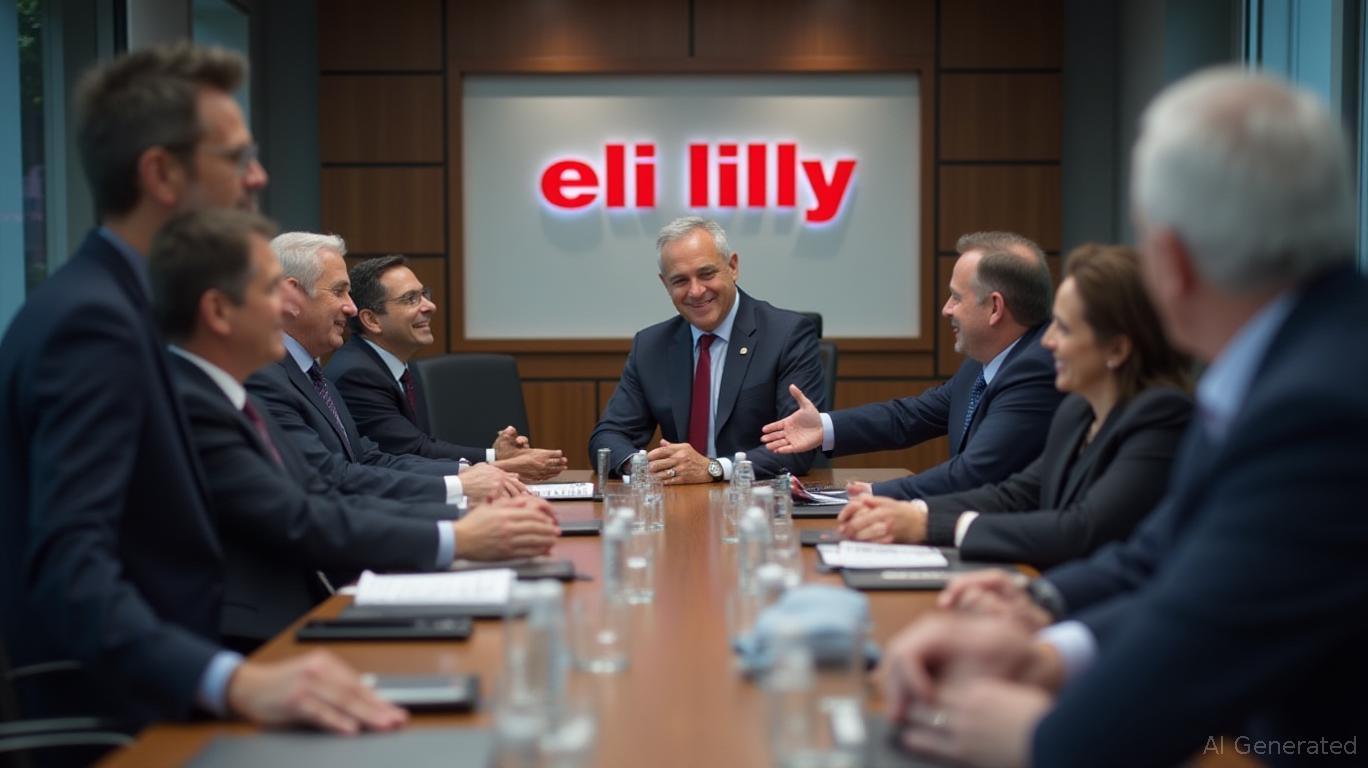Eli Lilly: Dividend Strength and Growth Catalysts in a Dynamic Pipeline
Nathaniel StoneMonday, Jun 23, 2025 12:03 pm ET
Eli

### Financial Health: Cash Flow Fuels the Dividend Machine
LLY's Q1 2025 results highlight $12.73 billion in revenue, up 45% year-over-year, with Mounjaro contributing $3.84 billion (up 113%) and Zepbound reaching $2.31 billion (a 350% surge). These products are not just revenue drivers but cash generators, as their high margins offset rising R&D and marketing expenses.
The dividend payout ratio (dividends divided by earnings) remains manageable. In Q1, non-GAAP EPS was $3.34, meaning the $1.50 dividend represents a 45% payout ratio—comfortably below the 60% threshold that often signals stress. With full-year 2025 revenue guidance of $58.0–61.0 billion, Lilly's cash flow should continue to support dividend growth.
LLY Dividend per Share
Date | Dividend Payable Date | Ex-Dividend Date | Dividend Record Date | Dividend Distribution Plan | Dividend per Share(USD) | Dividend Progress | Dividend Type | Dividend Announcement Date |
|---|---|---|---|---|---|---|---|---|
| 20231227-20241231 | 20240308 | 20240214 | 20240215 | 1.3 USD per Share | 1.30 | Implemented | Regular Cash Dividend | 20231208 |
| 20231227-20241231 | 20240610 | 20240515 | 20240516 | 1.3 USD per Share | 1.30 | Implemented | Regular Cash Dividend | 20240506 |
| 20231227-20241231 | 20240910 | 20240815 | 20240815 | 1.3 USD per Share | 1.30 | Implemented | Regular Cash Dividend | 20240624 |
| 20231227-20241231 | 20241210 | 20241115 | 20241115 | 1.3 USD per Share | 1.30 | Implemented | Regular Cash Dividend | 20241028 |
Name |
|---|
| Eli LillyLLY |
| Eli LillyLLY |
| Eli LillyLLY |
| Eli LillyLLY |
### Pipeline Advancements: Fueling Long-Term Growth
LLY's pipeline is its crown jewel. Key programs include:
- Oreforglipron: An oral GLP-1 agonist showing efficacy in diabetes and obesity (Phase 3 results positive).
- Donanemab: Alzheimer's drug with a modified dosing regimen reducing side effects, now approved in the EU.
- Lepodisiran: A PCSK9-targeting siRNA that reduced lipoprotein(a) by 94% in trials, addressing genetic heart disease.
These drugs could add billions in future revenue. For instance, Oreforglipron, if approved, could reduce reliance on injections, expanding the GLP-1 market. Meanwhile, Donanemab's EU nod signals global market access, amplifying its commercial potential.
### Capital Allocation Strategy: Balancing Growth and Returns
Lilly's capital allocation prioritizes R&D and manufacturing while rewarding shareholders. In Q1, R&D spending rose 8% to $2.73 billion (21.5% of revenue), ensuring pipeline progress. Manufacturing investments, including a $3 billion expansion in Wisconsin, aim to meet surging demand for Mounjaro and Zepbound.
Shareholder returns remain a focus. Beyond the dividend hike, Lilly reaffirmed its $15 billion share repurchase program, signaling confidence in its stock's value.
### Risks: Regulatory Hurdles and Competitive Pressures
While Lilly's pipeline is strong, risks loom:
1. Generic Competition: Trulicity's patent expiration in 2028 could erode profits.
2. IPR&D Charges: The $1.57 billion Q1 hit from Scorpion Therapeutics' acquisition highlights the cost of innovation.
3. Tax Headwinds: The effective tax rate rose to ~17%, squeezing net income.
### Investment Thesis: Income with Growth Catalysts
LLY's dividend is well-covered, with a payout ratio under 50% even after recent hikes. The stock's 3.2% dividend yield offers stability, while pipeline wins like Oreforglipron and Donanemab provide growth.
Historically, this strategy delivered an average annual return of 10.15% over the period, though with a maximum drawdown of -24.43%, underscoring volatility tied to earnings reactions. While the strategy underperformed the broader market (which returned 109.95% over the same span), its low volatility (15.54%) and Sharpe ratio of 0.65 suggest it offers a risk-adjusted complement to income-focused portfolios. For investors seeking to time entries around earnings, the data supports a disciplined approach—balancing potential upside with awareness of near-term swings.
LLY Closing Price
### Conclusion: A Buy for Income and Growth Investors
Eli Lilly's dividend sustainability is supported by its blockbuster drugs and disciplined capital allocation. While risks like generic competition exist, the pipeline's depth and manufacturing scale suggest resilience. For investors seeking steady income with growth upside, remains compelling—especially if its new drugs secure approvals.
Rating: Buy
Price Target (12-month): $320–$350
Risks to Watch: Mounjaro's patent timeline, regulatory delays for pipeline drugs, and biosimilar competition.
In a sector rife with volatility, Lilly's blend of dividend reliability and innovation-driven growth makes it a standout.
Disclaimer: The news articles available on this platform are generated in whole or in part by artificial intelligence and may not have been reviewed or fact checked by human editors. While we make reasonable efforts to ensure the quality and accuracy of the content, we make no representations or warranties, express or implied, as to the truthfulness, reliability, completeness, or timeliness of any information provided. It is your sole responsibility to independently verify any facts, statements, or claims prior to acting upon them. Ainvest Fintech Inc expressly disclaims all liability for any loss, damage, or harm arising from the use of or reliance on AI-generated content, including but not limited to direct, indirect, incidental, or consequential damages.

Comments
No comments yet